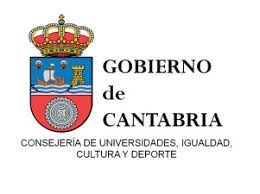On the questioning of orality and writing in Don Quixote: Cide Hamete and the supernarrator
DOI:
https://doi.org/10.55422/bbmp.23Keywords:
Quixote, Supernarrator, Dicotomies, Desnarration, OralityAbstract
Don Quixote is a work characterized by its hidden messages, ambiguities, mind games and subtle and intricate irony. Therefore, this essay focuses on the various narrators and supposed authors that appear in the two parts of the novel. James Parr's proposal is that of the super-narrator, who is a different editorial voice than Cide Hamete, who is the only the person who found the manuscript of the story of Don Quixote. Sometimes the authors or narrators are confused and it is difficult to distinguish them, except for some details in expression. In addition, regarding the original source of the story, Cervantes plays with the possibility that it is of oral origin, in the manner of minstrel stories that are later written down to be preserved. Furthermore, the themes of irony and games of analepsis, prolepsis and metalepsis are dealt with through unnarration, proving that Cervantes combines the unnarrated with the unspeakable to create comedy in some comments. Due to the numerous authors and narrators, who connect with the plot and the characters, dichotomies arise, such as good and bad reading and writing.
Downloads
Publication Facts
Reviewer profiles N/A
Author statements
Indexed in
- Academic society
- Sociedad Menéndez Pelayo
- Publisher
- Sociedad Menéndez Pelayo
Global Statistics ℹ️
|
241
Views
|
113
Downloads
|
|
354
Total
|
|
References
Cervantes, Miguel de. El ingenioso hidalgo don Quijote de la Mancha. Ed. Vicente Gaos. 3 tomos. Madrid: Gredos, 1987.
---. El ingenioso hidalgo don Quijote de la Mancha. Edición dirigida por Francisco Rico, Barcelona: Crítica, 1998.
---. El ingenioso hidalgo don Quijote de la Mancha. 2ª ed. Ed. Salvador J. Fajardo & James A. Parr. Asheville, NC: Pegasus Press (www.pegpress.org), 2002.
Derrida, Jacques. La dissémination. París: Seuil, 1972. Genette, Gérard. Figures III. París: Seuil, 1972.
---. Seuils. París: Seuil, 1987.
Martín Morán, José Manuel. El ‘Quijote’ en ciernes: Los descuidos de Cervantes y las fases de la elaboración textual. Alessandria: Dell’Orso, 1990.
Ong, Walter. Orality and Literacy: The Technologizing of the Word. London: Methuen, 1982. DOI: https://doi.org/10.4324/9780203328064
Parr, James A. ‘Don Quixote’: An Anatomy of Subversive Discourse. Newark, DE: Juan de la Cuesta, 1988.
---. Don Quixote, Don Juan, and Related Subjects: Form and Tradition in Spanish Literature, 1330-1630.
Selinsgrove, PA: Susquehanna University Press / Associated University Presses, 2004.
---. ‘Don Quixote’: A Touchstone for Literary Criticism. Kassel: Edition Reichenberger, 2005.
Paz Gago, José María. Semiótica del ‘Quijote’: Teoría y práctica de la ficción narrativa. Ámsterdam / Atlanta: Rodopi, 1995.
Platón. “Phaedrus; or, on the Beautiful.” Select Dialogues of Plato. Ed. & Trad. Henry Cary. New York: American Book Co., sin fecha.
Prince, Gerald. “The Disnarrated.” Style 22 (1988): 1-8. Saldívar, Ramón. “In Quest of Authority: Cervantes, Don
Quijote, and the Grammar of Proper Language.” Figural Language in the Novel: The Flowers of Speech from Cervantes to Joyce. Princeton: Princeton UP, 1984. 25-71.
Socrate, Mario. “Il prólogo della Primera Parte del Quijote.” Prologhi al ‘Don Chisciotte.’ Padova, Venezia: Ed. Marsilio, 1974. 71-127.
Willlis, Raymond. The Phantom Chapters of the ‘Quijote’. New York: Hispanic Institute in the United States, 1953.
Downloads
Published
How to Cite
Issue
Section
License
Copyright (c) 2022 James Parr

This work is licensed under a Creative Commons Attribution-NonCommercial 4.0 International License.







